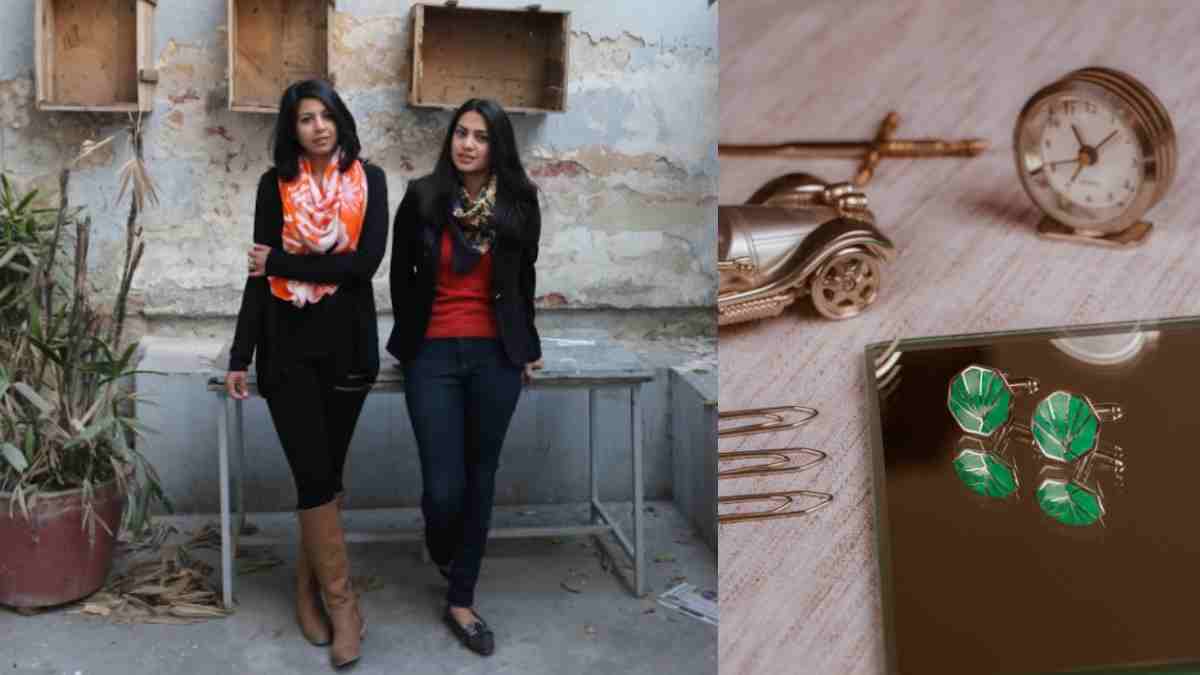


During their stint at one of India’s topmost design studios, classmates Divya Shekhawat and Shivangani Singh were exposed to the standard norm of factory-made fashion that catered to garish tastes on a mass scale. Their mutual dislike visà-vis this norm was further exacerbated when the duo began to take notice of a vast exception. A clientele that yearned for bespoke products and classic finery was growing rapidly all around the world, and it was this market that they wished to secure. Soon, Divya and Shivangani bade farewell to mainstream avenues and their metropolitan life in order to move back to their hometown of Jaipur where, in 2015, they launched Kesya.
Kesya, Divya and Shivangani’s very own design label, emerges from a derivative of kesariya, which is the Hindi word for the colour saffron. As per ancient Indian tradition, the colour symbolises auspiciousness and cheer, valour and courage all in one. Thus, it is for good reason that the Indian flag is striped with a saffron hue. That said, Kesya would not limit itself to deriving the mere colour values of saffron, but also seeking inspiration from it to reinvigorate traditional Rajasthani art and crafts through a series of fashion accessories for men and women. The brand performed its debut feature through a signature collection of men’s cufflinks, which borrows inspiration from a wide array of sources such as old colonial hunting scenes, palace frescoes, motifs, enameled jewellery, arms and artifacts.
Since the league of men’s fashion accessories already lacked diversity and price dynamism, it didn’t take Kesya too long to occupy a notable position as an exclusive competitor of luxurious accessories that were affordable and trustworthy. Divya and Shivangani intercepted the mundanity of choice between standard, run of the mill cufflinks on the one hand and exorbitant gem-studded ones on the other. Instead, they began by using a base of sterling silver that had Kesya’s panache embellished on it using ancient techniques such as enameling, hand painting and carving. The price range was diversified due to the inclusion of semi-precious stones in many of their products. In all, Kesya’s products are reminiscent of royal craftsmanship that amalgamates family stories or age-old heirlooms with designs that are fashionable in the contemporary sensibility.
In no time, Kesya became a buzzword amongst the elite clientele of Delhi and Jaipur, which Divya and Shivangani considered to be a herald for an expansion into the urbane landscapes of Bangalore and Ahmedabad.
However, the emergence of a highly receptive market inevitably spurts out alternate competitors, which the designer duo considers as healthy competition. Such competition provided an impetus for them to revise their own deficits and grow further. But the ugly truth of plagiarism bears no respite in descending a burdensome host of imitators upon Kesya’s flight. In order to elaborate this, Shivangani says, “Imitation and replication are a huge problem, and it doesn’t stop at copying our own products. Some imitators even plagiarise or product descriptions and social media content! It used to worry us a lot at the beginning, but we’ve come to realize that true connoisseurs of fashion will always know how to differentiate between authenticity and imitation. Sellers who are replicating us or anyone are taking a shortcut are eventually cheating and it doesn’t work in the long run.” Divya adds to this by making an interesting observation vis-à-vis present day consumer trends. “Today’s consumers are more informed in terms of their choices and quality parameters. Hence, they are in a better position to make judgments that help them determine the authenticity of genuine brands”, she adds.
Drifting through its fifth year, Kesya has been amongst the more resilient brands to take the existent lockdown in their stride. Both Divya and Shivangani have diversified their products over time and have thrown open more flexible modes of purchase via their official website and social media handles. In other words, their predominantly male-centric approach has alternated into token necklaces, bracelets and earrings for women. As the annual festival of Rakshabandhan looms around the corner, they are busying themselves in making available a host of gifting choices. After all, the quarantine blues looming over our heads could do with a much-needed session of retail therapy.
The author is a writer, hotelier and a protagonist for Rajput culture.